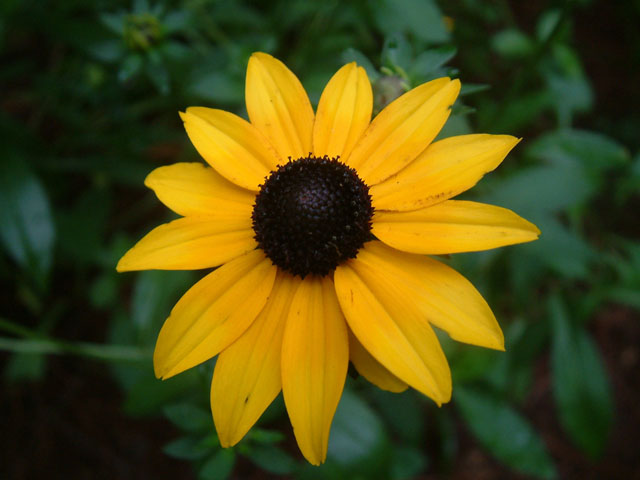 Photo ©
Stefan Bloodworth
Photo ©
Stefan Bloodworth
The Black-eyed Susans’ (Rudbeckia hirta) are biennial plants that produce nectar that attracts butterflies, bees and other insects which can be potential food for birds. It also provides shelter for several song and game birds. Black-eyed Susans usually are used in treatment of critical areas subject to erosion! This plant is incredibly winter hardy; it can tolerate temperatures as low as -30⁰F.
The black-eyed Susan grows to be about 3 feet tall (about 1 m) with bright yellow ray flowers that are 2 to 3 inches wide and have small, dark brown spherical centers. Don’t worry if your black-eyed Susan seeds do not produce flowers the first year! They typically bloom in the summer and fall of the second year. Unfortunately, the plants die after producing flowers and having their seeds mature. Fortunately, however, once established, new seedlings will be produced from the plant before it dies.
Instructions
- Plant black-eyed Susans when the soil temperature is around 70⁰ F for best seed germination. Sow by seed in loosely covered soil. This plant tends to spread out, so plant the seeds closer together to prevent them from sprawling (if you’d like).
- Plant in a large container with moist, well-drained soil. Make sure the soil doesn’t dry out.
- These plants prefer full sun but they will also grow in partial sun.
- They grow best if soil is fertile but they can tolerate tough conditions.
- Cut back the dead flowers for a chance at a second, smaller bloom in the fall.
- Fertilize the plants in the container once a year (in the spring).
If you would like to learn more about the black-eyed Susan, please click here.